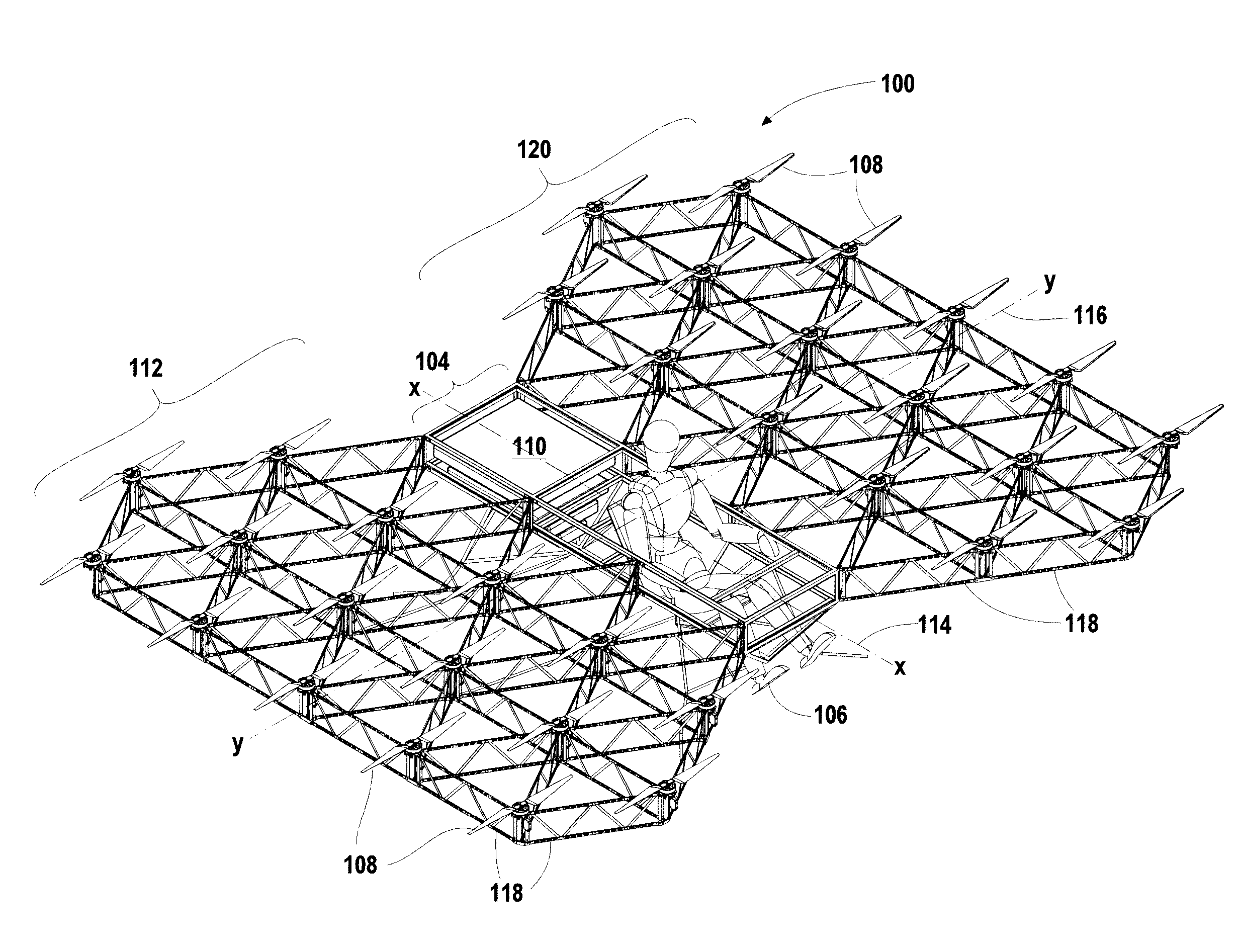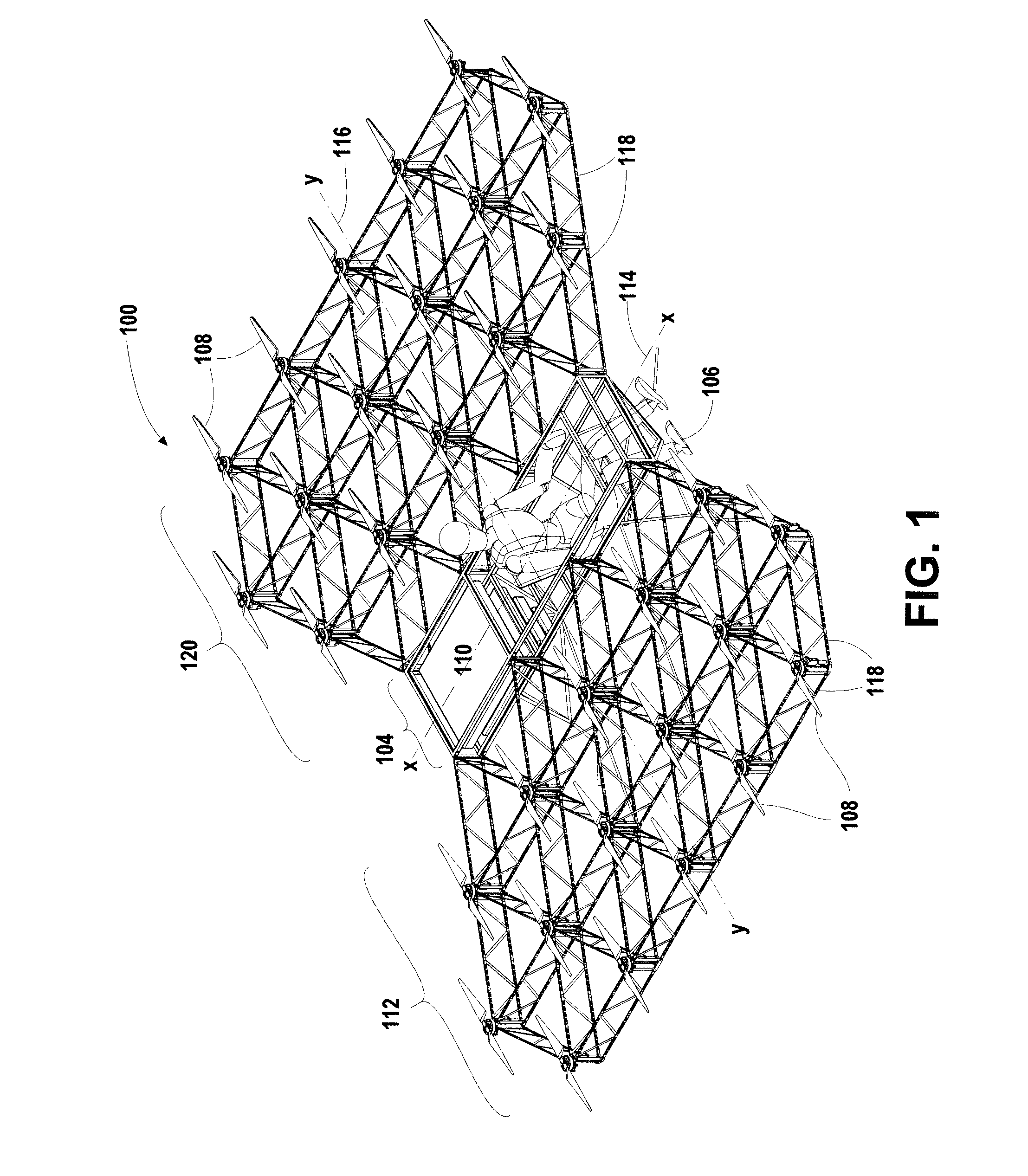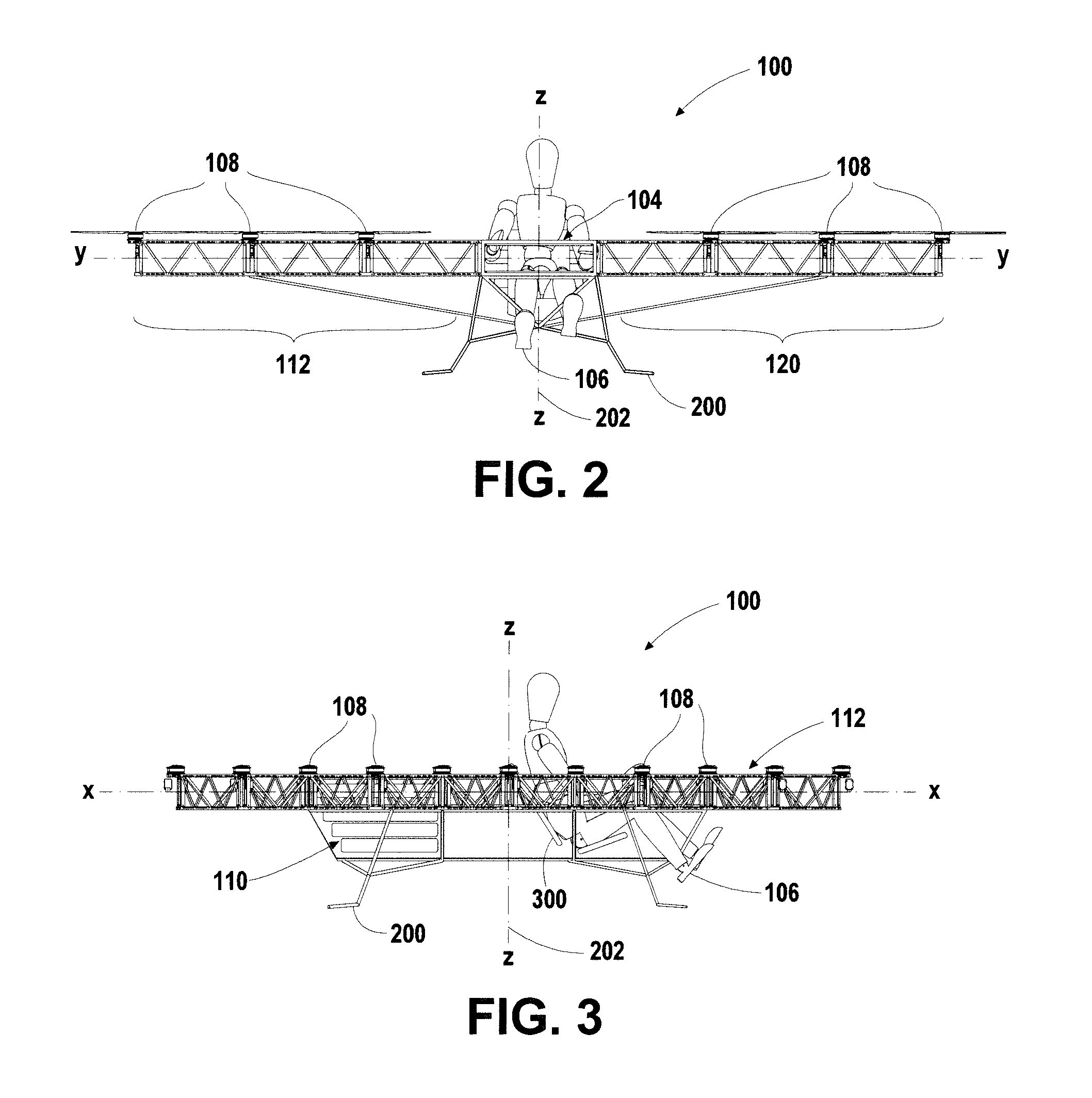Multirotor flying vehicle
a multi-rotor flying vehicle and rotor technology, applied in the field of aircraft, can solve the problems of rotor inertia, rotor inertia becomes a key limiting factor, and the rotor inertia of conventional multi-rotor aircraft is inherently unsafe for carrying a person
- Summary
- Abstract
- Description
- Claims
- Application Information
AI Technical Summary
Benefits of technology
Problems solved by technology
Method used
Image
Examples
first embodiment
[0182]Referring next to FIG. 23, a perspective view of a hexagon grid multirotor flying vehicle 2300 is shown. Shown are the fuselage 104, the plurality of rotor assemblies 108, the power assembly 110, the left rotor support frame 112, the x-axis 114, the y-axis 116, the plurality of linkage arms 118, the right rotor support frame 120, landing gear 200, and support struts 204.
[0183]In an alternate rotor support frame embodiment, the linkage arms 118 span from vertex to vertex and are arranged in hexagonal grid, i.e. with three linkage arms 118 coupled together at each vertex. In comparison, the triangular grid has six linkage arms 118 coupled together at each vertex. As with the triangular grid embodiment, the rotor assemblies 108 are coupled to the linkage arm vertexes. As with the triangular grid embodiment, linkage arms 118 proximate to the fuselage 104 are coupled to and supported by the fuselage 104, and diagonal support struts 204 provide additional support for the rotor suppo...
second embodiment
[0185]Referring next to FIG. 24, a perspective view of a hexagon grid multirotor flying vehicle 2400 is shown. Shown are the fuselage 104, the plurality of rotor assemblies 108, the power assembly 110, the left rotor support frame 112, the x-axis 114, the y-axis 116, the plurality of linkage arms 118, the right rotor support frame 120, landing gear 200, and a plurality of hexagon struts 2402.
[0186]In the embodiment shown, in lieu of linkage arms 118 that are of general truss configuration, solid plates may be used, the plates being rigidly coupled together at the linkage arm ends. The additional hexagon struts 2402 are oriented in the horizontal plane and span the interior of each hexagon shape formed by the linkage arms 118, providing additional strength and stability to the shape.
[0187]Rotor downwash drag (thrust shadow) minimization requires minimization of surface area subjected to rotor downwash. This can be achieved by a minimizing arm count subject to downwash, minimizing arm...
PUM
 Login to View More
Login to View More Abstract
Description
Claims
Application Information
 Login to View More
Login to View More - R&D
- Intellectual Property
- Life Sciences
- Materials
- Tech Scout
- Unparalleled Data Quality
- Higher Quality Content
- 60% Fewer Hallucinations
Browse by: Latest US Patents, China's latest patents, Technical Efficacy Thesaurus, Application Domain, Technology Topic, Popular Technical Reports.
© 2025 PatSnap. All rights reserved.Legal|Privacy policy|Modern Slavery Act Transparency Statement|Sitemap|About US| Contact US: help@patsnap.com



